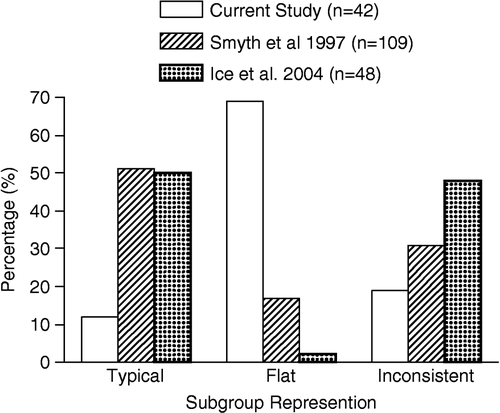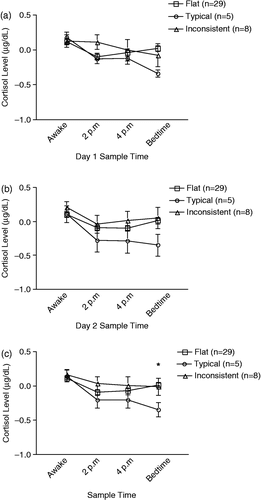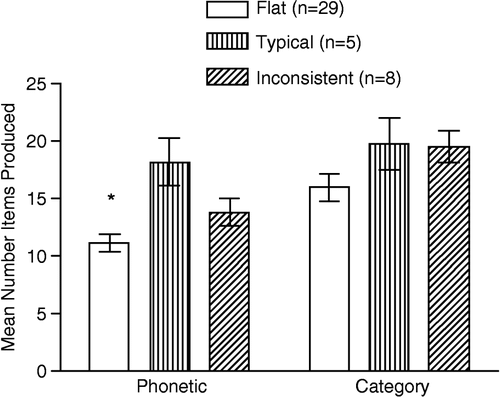Figures & data
Figure 1 Percentage representation of the three diurnal cortisol subgroups in the present study (elderly with memory problems/depressed mood) and that found by Smyth et al. (Citation1997; healthy young population) and Ice et al. (Citation2004; healthy elderly). Chi-square analysis for independence found overall significant relationship between study and subgroup representation (p = 0.001).

Figure 2 Mean ( ± SEM) cortisol levels (nonlog, μg/dl) across the four sampling periods for (a) day 1, (b) day 2, and (c) overall (i.e. day 1 and 2 combined) mean cortisol levels across sampling periods. Significant differences were found between the typical and flat cortisol subgroups for mean bedtime cortisol levels (p = 0.02). Trend was found between typical and inconsistent subgroups (p = 0.08). *,.

Table I. Means (SEM) score on demographic variables as a function of diurnal cortisol subgroup.
Table II. Means (SEM) score on neurocognitive tests as a function of diurnal cortisol subgroup.
Figure 3 Mean ( ± SEM) score on phonetic/semantic subtests of the verbal fluency task as a function of diurnal cortisol subgroup. The flat subgroup preformed significantly more poorly than the typical subgroup (*p = 0.02) by recalling fewer phonetic words within a one-minute time span.

Table III. Relationship between cortisol subgroup representation and subjective complaints.